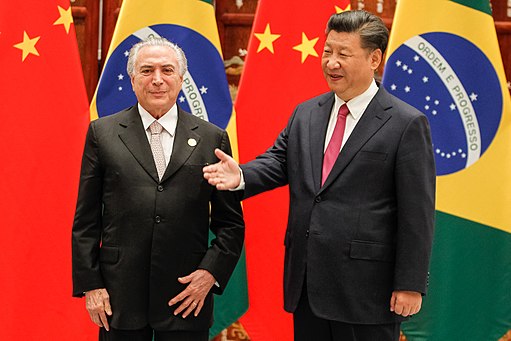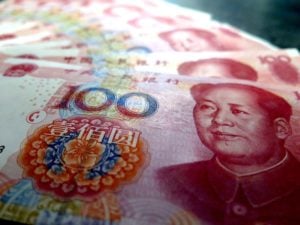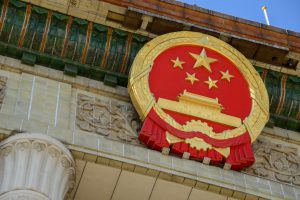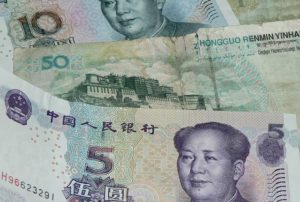China has experimented with a number of financial instruments to encourage the financial sector to support sustainability, with one in particular – green bonds – outperforming conventional equivalents
On the streets of Beijing this winter you could see that fewer people were covering their faces with pollution masks. This was a big change from previous years, and although it seemed sudden, it was largely thanks to a concerted effort in China to curb environmental degradation.
To do this, China has embraced a plethora of green policies from enhancing environmental risk management to carbon trading schemes. However, there is one relatively new invention that is making big changes to both the environment and the economy: green finance.
This branch of economics emphasises that the environment matters to the bottom line of modern companies, and not just to their marketing departments. Green finance aims to bridge the gap between finance, climate change and environmental protection by funding projects in sectors from transport to energy that are compatible with long-term sustainability goals.
From denial to action
China’s rapid development story is well known: the focus on growing the economy has had a disastrous impact on the environment. But the second act is less known: the realisation of the problem and the magnitude of the policy shift.
China is quickly becoming a world leader in green finance thanks to the endorsement of the top echelons of the political leadership. “Climate change is an example of where the intention of China’s top leadership matches well with reality on the ground,” chinadialogue wrote three years ago.
A big step in raising the profile of green finance internationally came when China, as host of the G20 Summit in 2016, included green finance in the official communiqué. At subsequent G20 meetings, Germany and France have picked up the green finance baton.
Furthermore, in October 2017, President Xi Jinping referred to green finance in his speech at the 19thparty congress – the quinquennial gathering at which the party outlines its policy priorities. Once something receives the official seal of the party at that level, things move fast. This has also been true of green finance.
The growth of the green market
Ma Jun, a special advisor to the UN Environment Programme (UNEP) on Sustainable Finance, and co-chair of the G20 Green Finance Study Group, once summarised how traditional finance in China was inadequately supporting green development: “If you look into China’s banking system, you find the average length of a loan is only two years. So if you need funding for a ten-year project you need to raise funds five times. That greatly increases investment risks because if you fail to get the next loan the project is forced to shut down.”
Ma went on to say that a lot of green projects, including subways, railways, water treatment, solid waste, and new energy have lengthy investment periods. “It might be 10, 15 or even 20 years before investments see a return. This is far beyond the loan periods offered by banks in developing nations.”

One of the key green finance tools to address the above problem is green bonds and China has quickly become a world leader in this area. Green bonds are similar to other bonds in as much as the borrower issues debt to a bond holder in order to finance a project. The difference is that ‘green’ bonds generally support environmental projects, or those that help meet broader climate goals such as reducing carbon emissions. However, definitions of what qualifies as ‘green’ often differ between countries and issuers.
Within the past three years, the issuance of green bonds, has grown from close to zero to US$37.1 billion. In 2017, the market issuance increased by 4.5%. This may seem a relatively small increase, but in a bond market that saw a decline of 85%, that is still impressive. Today, China is second behind the US globally for the total amount issued in green bonds. There are a number of reasons behind the sudden rise.
Policy Signals
Clear policy signals are essential for the financial market to turn green.
The People’s Bank of China (PBoC) and the National Development and Reform Commission (NDRC) – the main administrative body tasked with designing and implementing a strategy for economic and social development – have made strong statements on policy. These came in the form of green bond guidelines to investors in December 2015 and January 2016, respectively.
In these guidelines, two regulators – the China Securities Regulatory Commission, and the Shanghai and Shenzhen Stock Exchange – set out what kinds of bonds could be labelled green, how to achieve the classification, who would qualify the bond as green, and the guidelines for further development of the market. After the guidelines were created, relevant regulators and participants set out to define how to interpret them, and within two years the Chinese green bond market has grown to more than US$30 billion.
China’s green bond market is following a similar development path to that of its flourishing solar industry: A clear statement by the central authority on intentions, the inclusion of the sector in documents from central government, followed by favourable market conditions for early entrants.
The size and the growth of the Chinese credit market are the primary pillars of the framework for green bonds, says Wang Yao, general director at the International Institute of Green Finance. The central government has relied on local governments to test and grow the infant industry. However, according to Wang, the central government is working on formulating green finance subsidy mechanisms to create incentives for investors and business.
But the pay-off for investors choosing to ‘go green’ is currently limited, says Wang. “Investing in green finance seems to bear a considerable opportunity cost, especially as the green technology is rather costly and the internalisation of environmental cost is still at a very initial stage.”
Companies haven’t begun to factor environmental costs into their decision-making because green assets still fall in the category of long-term investments. But Wang believes the benefit of green investments will one day outweigh their opportunity costs.
Pilot zones
In the summer of 2017, the Chinese authorities set up five green pilot zones in the provinces of Guangdong, Guizhou, Jiangxi, Zhejiang, and Xinjiang. These will explore financial innovations to support the growth of green industries, with each zone having a specific green finance subcategory to explore.

The southern Chinese province of Guangdong is a good example of what the pilot zones are supposed to achieve, and how they match region-specific conditions. Of the five zones, Guangdong is the biggest in terms of population, it has the most financial institutions, the richest citizens, and the highest urbanisation rate. In the Huadu district, north of provincial capital Guangzhou, the pilot project focused principally on the area’s financial services industry, including trading schemes for emission permits, water rights and energy use quotas.
That’s in contrast to Xinjiang, a mountainous desert province in the north-west of China, that is setting up its green finance zone to cater specifically to the solar and wind industry.

The five pilot zones are relatively free to implement green finance policies in their own regard, so they will refine best practices along the way. But local specialisation is encouraged as China’s provinces have varying capacities and characteristics. They also have different environmental problems and, potentially, offer their own solutions.
Once the five pilot programs are operating it will be possible for government and regulators to define a best practice approach and apply it to the policies applicable for the entire country.
Transparency
A healthy green finance market requires transparency. Green bond investors need to have absolute confidence that their funds are going to green businesses – or else they might as well invest in a conventional bond. But transparency in the green bond sector has left a lot to be desired, both in China and globally.
Issuers in China primarily rely on PBoC guidelines when they certify whether the bond is green or not. The guidelines are from 2016 and have since been supplemented by separate, but similar, policies from the NDRC, and the Shanghai Stock Exchange, which aim to clarify what’s green and what isn’t.
According to the PBoC’s green bond policy, an issuer has to report the type of projects funded by green bond proceeds every quarter. This kind of report could show, for example, that one billion yuan out of a two billion yuan bond has gone to a solar farm and the next one billion yuan to a water treatment plant. A special auditor’s report from a third-party auditor is published to confirm the use of the bond proceeds.
The biggest single auditor in the Chinese market is Zhongcai Green Financing, a consultancy affiliated with the International Institute of Green Finance, while the big four auditors KMPG, EY, Deloitte and PWC make up 58% of the market. There are 11 approved auditors operating in China, but more will join as the market opens up. Their role and importance will grow alongside the market.
The general improvement in the disclosure of environmental information in China also provides a more solid foundation for the development of green finance. The Ministry of Environmental Protection, now part of the new and larger Ministry of Ecology and Environment following a re-shuffle in March, has been gradually expanding regulations that will force companies to publish their environmental information. It has also made more government-owned environmental data on such companies available to the public.
As Guo Peiyuan, chairman of consultancy Syntao Green Finance, observed; “The sharing of environmental data by the environmental authorities has played a hugely positive role in the development of green finance, and in particular in green lending by commercial banks.”
In some localities in China, authorities are trying to improve the quality and presentation of such data to help financial institutions improve financial risk assessment of enterprises. By 2020 it will be mandatory for all Chinese companies to disclose their environmental information. It is a gradual process but companies can see what changes are coming.
Standards and internationalisation
Clearly defined standards are crucial for an efficient market to exist, and are a big issue at the current stage of green finance development because they vary too much across borders, which handicaps growth potential. Finance is global, but if, for example, a German pension fund manager isn’t sure whether her investment lives up to the green mandate given by her investors when she is purchasing a green bond in China, she can’t follow through on her investment, which leads to less demand, less investment, and, subsequently, less sustainable growth.
However, both investors and financial institutions are becoming increasingly convinced of the importance of environmental protection and climate resilience. Higher demand for a bond means a lower coupon rate (the interest paid by the issuer on the bond) which is also more attractive for companies and banks considering issuing in the green bond market.
European pension funds are at the forefront of fossil fuel divestment and sustainable investment but are faced with a limited supply of green assets to invest in globally. Last summer, banking and investment think-tank the Official Monetary and Financial Institutions Forum asked money managers what they were looking to invest in. Half answered they were considering entering the green bond market. These 237 companies, with a combined market capitalisation of US$6.3 trillion, have publicly committed to support the Task Force on Climate Related Financial Disclosures, a group chaired by former New York mayor Michael Bloomberg whose mission is to enhance transparency in green finance. There’s a clear interest in green assets, the hurdles are information and access.
This is a challenge in China due to the closed nature of its financial markets. But just last autumn Beijing made legislative strides towards opening up its markets and this looks set to benefit the green finance sector. The November policy changes will allow foreign financial institutions to become majority shareholders in Chinese financial companies, and in the future they will be allowed to become the sole owners of companies.

China’s financial markets are still underdeveloped in both size and sophistication and this is particularly true of green finance. One of the next big developments for the green finance market in China will come in the form of Asset Backed Securities – an asset which typically has a shorter maturity (the time period after which final repayment is due) and can be securitised (pooled and their cash flows sold to third parties) helping banks to bring down the overall cost of green credit. This is a market whose evolution could benefit from the increase of foreign cash and expertise.
Meanwhile, Chinese green finance is also set to go global as it has become a central part of the guidelines for investing in the Belt and Road Initiative, as well as part of the official mandate of the Shanghai-based Asian Infrastructure Investment Bank (AIIB), to which China is a large contributor.
The one inhibitor of further internationalisation is the difference in shades of green that exist across borders. China has diverged from the rest of the world in its focus on ‘clean coal’ in green bond portfolios. By all standards, clean coal is not clean. As Charles Bedford, regional managing director of the Asia-Pacific region for the Nature Conservancy, told Bloomberg Environment in February: “Making coal less bad doesn’t make for a green bond, but making coal less bad isn’t a bad thing.”
Wang Yao disagrees on whether clean coal should be allowed to feature in green bond portfolios. This is something investors will have to accept as emerging markets mature: “My opinion is that we will not have a unified, global standard for green finance. Different countries are in different stages of development, which means different industry, energy and economic structures. Some countries will still have to rely on coal, while others are 100% renewables. You can’t abandon countries that still use coal, but you can make the coal cleaner and further develop other, cleaner energy sources.”
China still derives a massive 64% of its energy from coal, and even though it is weaning itself off its dependency, that number will remain above 50% in 2030, according to a 2016 research paper in the scientific journal Engineering.
Global example
Many developed countries have followed China’s example. France is a big issuer of green bonds and its profile has grown quickly since the election of Emmanuel Macron.
Australia, which is home to big pension funds that are would-be investors in green bonds, is yet to issue its first green bod. Investors say the uncertainty of the country’s environmental policies is damning for the market.
Brazil, an emerging economy which currently sits just outside the top 10 in the global ranking of green bond issuers, offers great potential for green investments, according to the World Bank Group’s International Finance Corporation (IFC). In order to meet targets set out in its national climate plan – or nationally determined contribution (NDC), submitted to the UN – Brazil will require US$1.3 trillion in finance.
Brazil has committed to an unconditional greenhouse gas emissions reduction of 37% by 2025, rising to 43% by 2030 subject to receiving international finance. The NDC also aims to increase bioenergy consumption to 18% and the overall share of renewables in the energy mix to 45% – as well as restoring forests and improving sustainable forms of transport.
However, the Brazilian government recently moved to cap public expenditure for the next 20 years. If it is to meet its climate targets, international private capital will be key. “Green bonds have the potential to leverage the strengths of Brazil’s key sectors and shift investment towards a low-carbon economy,” a report by the organisation Climate Bonds Initiative says.
“Brazil is on track to positioning itself as a future leader in green finance. The country has surpassed the 11 billion reais (US$3.7 billion) mark in green bond issuances with emphasis on investments in low-carbon agriculture, sustainable infrastructure and renewable energy,” Justine Leigh-Bell, director of market development at the Climate Bonds Initiative told a meeting of the Brazil Green Finance Initiative in Sao Paulo in December.

In June last year, China and Brazil established a US$20 billion fund to improve infrastructure, with China assuming responsibility for 75% of the projects it will back. Against a highly uncertain political landscape, credit ratings agencies Fitch and Standard and Poor’s have downgraded Brazil this year. Though investors may consider the Latin American country too high risk for long-term investments, the report says the Brazil-China fund could provide a good starting point to leverage green bonds related to infrastructure.
Green bonds: A win-win?
The beauty of green finance is that it is local and global at the same time. When the air is fresh and clean in Beijing, it benefits the locals. When China curbs carbon emissions nationally through increasing the share of clean energy sources in its energy mix, it benefits the whole world.
If there is one thing that can help grow a market, it’s the prospect of profits. Companies and investors that talk of ‘going green’ as a superficial move to improve their image overlook the many opportunities the green finance sector can offer. The Chinese experience tells a compelling story: A recent analysis showed that an index of green stocks listed on the Hong Kong-Shenzhen connect, outperformed conventional stock by 8%.
As the Paris Agreement of 2015 showed, the battle against climate change has gone global. In politics this is leading to global cooperation on curbing pollution and reducing carbon emissions. Cooperation around national and global policies on green finance has the same potential. It requires the creation of clear and focused policies, conditions, and an equal playing field based on open information exchanges – then it’s about letting the market do its job.








